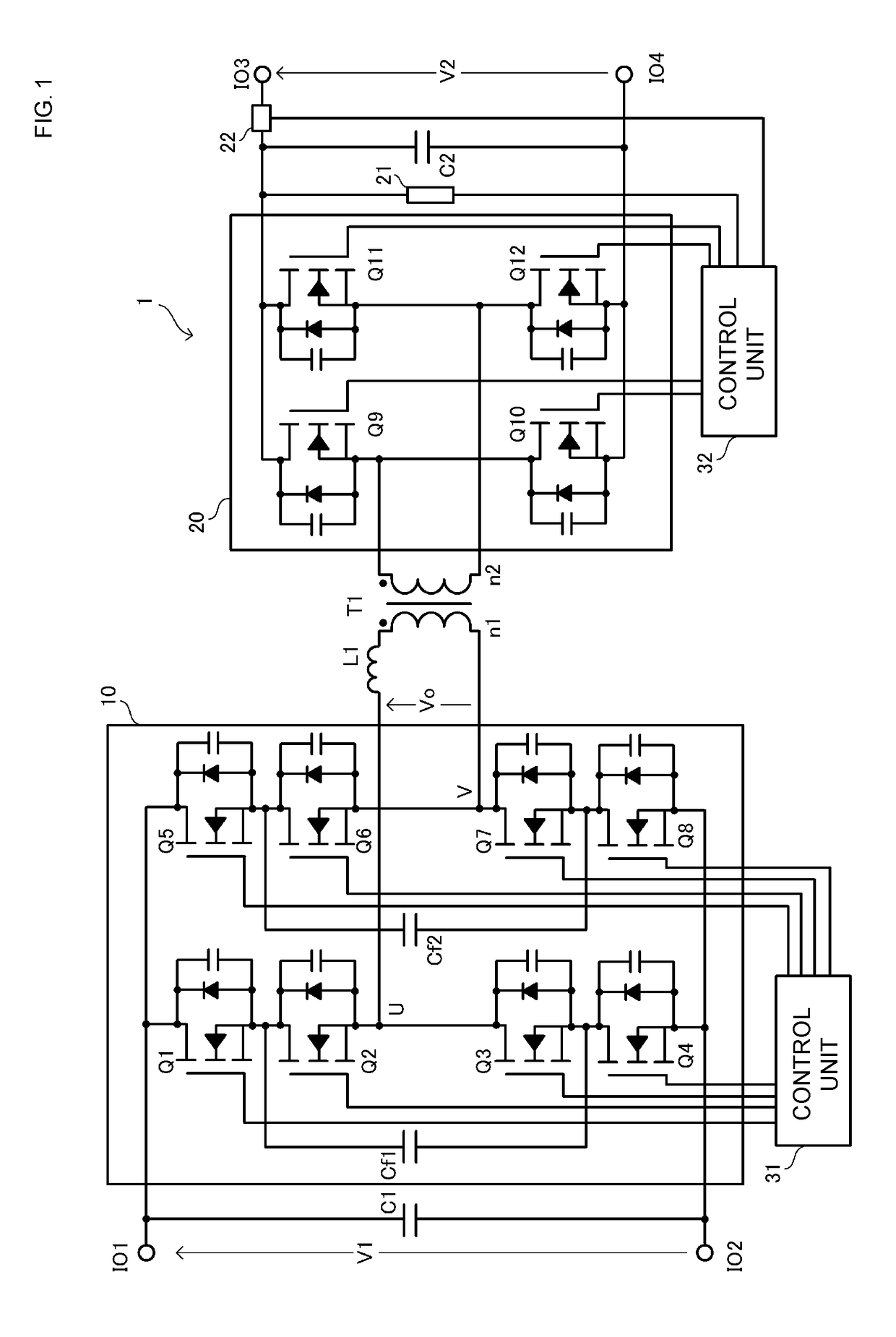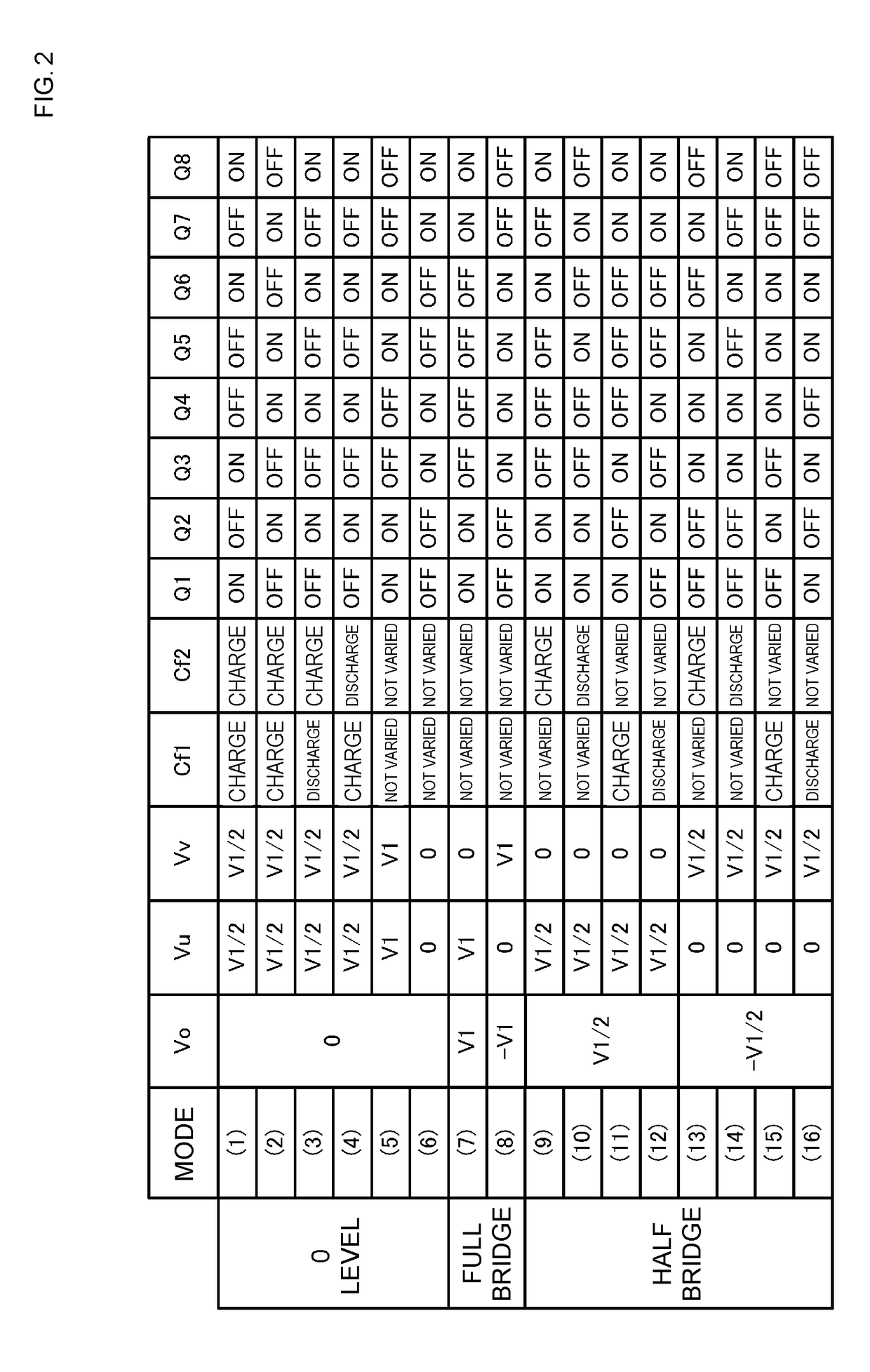DC-DC converter
a converter and converter technology, applied in the direction of electric variable regulation, process and machine control, instruments, etc., can solve the problems of reducing efficiency when performing zvs, and achieve the effects of suppressing an increase in reactive current, widening the range of zvs operation, and high efficiency
- Summary
- Abstract
- Description
- Claims
- Application Information
AI Technical Summary
Benefits of technology
Problems solved by technology
Method used
Image
Examples
Embodiment Construction
[0030]An exemplary DC-DC converter described below is a DAB DC-DC converter including two full-bridge circuits. In the DAB DC-DC converter, the two full-bridge circuits are set so as to have the same driving frequency and are controlled so as to have a phase difference to transmit electric power between the two full-bridge circuits.
[0031]FIG. 1 is a circuit diagram of a DC-DC converter 1 according to an exemplary embodiment.
[0032]As shown, the DC-DC converter 1 has input-output terminals IO1, IO2, IO3, and IO4. A load and a direct-current power supply are connected to the input-output terminals IO1, IO2, IO3, and IO4. The DC-DC converter 1 is a bi-directional DC-DC converter that transforms direct-current voltage supplied from the input-output terminals IO1 and IO2 or the input-output terminals IO3 and IO4 and outputs the transformed voltage from the remaining input-output terminals.
[0033]For purposes to the disclosure, the input-output terminals IO1 and IO2 correspond to an “input ...
PUM
 Login to View More
Login to View More Abstract
Description
Claims
Application Information
 Login to View More
Login to View More - R&D
- Intellectual Property
- Life Sciences
- Materials
- Tech Scout
- Unparalleled Data Quality
- Higher Quality Content
- 60% Fewer Hallucinations
Browse by: Latest US Patents, China's latest patents, Technical Efficacy Thesaurus, Application Domain, Technology Topic, Popular Technical Reports.
© 2025 PatSnap. All rights reserved.Legal|Privacy policy|Modern Slavery Act Transparency Statement|Sitemap|About US| Contact US: help@patsnap.com



